-
 Bitcoin
Bitcoin $116400
-1.69% -
 Ethereum
Ethereum $3731
2.87% -
 XRP
XRP $3.119
-1.00% -
 Tether USDt
Tether USDt $1.000
-0.04% -
 BNB
BNB $774.0
1.01% -
 Solana
Solana $181.0
-2.25% -
 USDC
USDC $1.000
0.02% -
 Dogecoin
Dogecoin $0.2314
-2.16% -
 TRON
TRON $0.3145
1.76% -
 Cardano
Cardano $0.8087
0.22% -
 Hyperliquid
Hyperliquid $43.01
0.68% -
 Stellar
Stellar $0.4247
-0.93% -
 Sui
Sui $3.758
1.42% -
 Chainlink
Chainlink $18.30
1.99% -
 Bitcoin Cash
Bitcoin Cash $551.4
5.66% -
 Hedera
Hedera $0.2482
3.08% -
 Avalanche
Avalanche $23.70
0.18% -
 Litecoin
Litecoin $115.1
2.44% -
 UNUS SED LEO
UNUS SED LEO $8.972
-0.36% -
 Shiba Inu
Shiba Inu $0.00001370
0.73% -
 Toncoin
Toncoin $3.146
0.74% -
 Ethena USDe
Ethena USDe $1.001
-0.03% -
 Uniswap
Uniswap $10.49
3.95% -
 Polkadot
Polkadot $4.044
1.42% -
 Monero
Monero $328.9
2.43% -
 Dai
Dai $0.9998
-0.03% -
 Bitget Token
Bitget Token $4.510
-1.10% -
 Pepe
Pepe $0.00001231
-1.68% -
 Aave
Aave $293.4
2.16% -
 Cronos
Cronos $0.1294
2.89%
How to increase the position when the monthly line breaks through the previous high + the weekly KD golden cross + the daily line gaps?
A monthly breakout above prior highs, confirmed by a weekly KD golden cross and a daily breakaway gap on high volume, signals a high-conviction long opportunity with strong institutional backing.
Jul 24, 2025 at 09:42 am
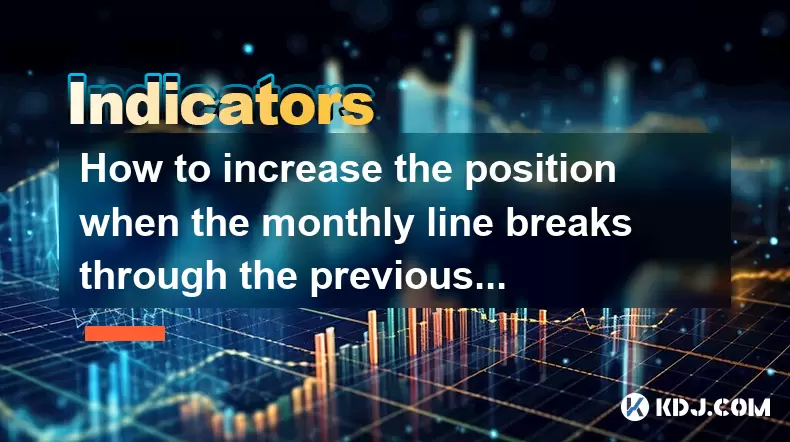
Understanding the Monthly Line Breakout Beyond Previous High
When the monthly line breaks through the previous high, it signals a powerful shift in long-term market sentiment. This breakout often reflects a fundamental change in supply and demand dynamics, where buyers have overcome previous resistance levels on a macro scale. In technical analysis, the monthly chart is one of the most reliable timeframes for identifying major trend reversals or continuations. A close above the prior monthly high suggests that institutional accumulation may have occurred over several months, laying the foundation for a sustained bullish move.
To confirm the validity of the breakout, traders should check whether the volume accompanying the monthly candle is significantly higher than average. A high-volume breakout increases the probability of continuation. Also, ensure that the breakout is not a false move by waiting for the next monthly candle to close above the previous high. Once confirmed, this becomes a high-conviction signal to consider increasing exposure. The breakout level becomes a new support zone, and any pullback toward it can be seen as an opportunity rather than a threat.
Interpreting the Weekly KD Golden Cross
The weekly KD indicator (Stochastic Oscillator) consists of two lines: %K and %D. A golden cross occurs when the %K line crosses above the %D line in the oversold region (typically below 20), indicating rising momentum on a weekly basis. This crossover suggests that short-term momentum is shifting upward after a period of correction or consolidation.
To use this signal effectively:
- Ensure the weekly KD has emerged from the oversold zone before the crossover.
- Confirm that the crossover occurs while the price is above key moving averages, such as the 50-week or 200-week MA.
- Avoid acting on crossovers that happen near overbought levels (>80), as they may indicate exhaustion rather than initiation.
When the weekly KD golden cross aligns with a monthly breakout, it strengthens the bullish case. This confluence shows that both long-term structure and intermediate-term momentum are turning favorable. Traders can interpret this as a green light to begin scaling into long positions, especially if other indicators like volume and on-chain data support accumulation.
Recognizing the Significance of Daily Price Gaps
A gap on the daily chart occurs when the current day’s opening price is significantly higher than the previous day’s closing price, with no trading activity in between. In the context of a monthly breakout and weekly KD golden cross, a daily gap acts as a confirmation of strong buyer enthusiasm.
There are different types of gaps:
- Breakaway gaps occur at the start of a new trend, often after a consolidation period. These are highly significant when aligned with higher timeframe breakouts.
- Continuation gaps appear in the middle of a trend, showing sustained momentum.
- Exhaustion gaps happen near the end of a move and are followed by reversals—these should be avoided.
For this strategy, focus on breakaway or continuation gaps that occur after the monthly and weekly conditions are met. A gap on high volume increases reliability. The gap zone itself becomes a key support level; if price returns to fill the gap, it may present a second entry opportunity, provided the higher timeframe structure remains intact.
Step-by-Step Position Scaling Strategy
When all three conditions align—monthly breakout, weekly KD golden cross, and daily gap—a structured approach to increasing position size is essential to manage risk and maximize reward.
- Identify the asset meeting all three criteria using a multi-timeframe scanner or manual chart review.
- Determine the baseline entry point: ideally, enter on the day the daily gap forms, or on the close following the gap if confirmation is needed.
- Allocate an initial position size (e.g., 30% of planned total exposure) at the first entry.
- Set a stop-loss slightly below the monthly breakout level or the gap support, whichever is more conservative.
- If the price pulls back toward the gap or monthly breakout zone without breaking structure, add a second tranche (e.g., another 30%).
- Add a third portion when the weekly KD remains in bullish territory (above %D and rising) and the daily trend confirms with higher highs and higher lows.
- Use trailing stops on winning positions to protect profits as the trend extends.
This method ensures that exposure increases only as the trend confirms itself, reducing the risk of overcommitting early.
Risk Management and Confirmation Filters
Even with strong confluence, not every setup will succeed. Applying filters enhances the quality of entries.
- Confirm that on-chain metrics (if applicable to the cryptocurrency) show increasing exchange outflows or rising active addresses, indicating real demand.
- Monitor funding rates on futures markets; avoid highly leveraged long setups if funding is extremely positive, as this may precede a squeeze.
- Use volume profile to verify that the breakout occurred at a high-volume node, not in a low-liquidity zone.
- Cross-check with Bitcoin’s trend—if BTC is in a downtrend, even strong altcoin signals may fail due to market-wide pressure.
Position size should be adjusted based on volatility. Assets with higher ATR (Average True Range) should receive smaller allocations to maintain consistent risk per trade.
Practical Example Using a Cryptocurrency Chart
Consider a scenario with a mid-cap altcoin:
- The monthly candle closes above a two-year high at $10.00, after three months of consolidation.
- On the weekly chart, the KD oscillator was below 20 and the %K line crosses above %D at $9.50.
- The following day, the daily chart opens at $11.50, gapping up from the prior close of $10.80, on 3x average volume.
Execution steps:
- Enter 30% of the position at $11.60, just above the gap.
- Place a stop-loss at $9.40, below the weekly KD crossover zone and monthly support.
- Watch for consolidation near $11.80–$12.00; if volume remains strong, add 30% more at $12.10.
- Trail the stop to $10.50 once price reaches $13.00.
- Add final 40% if the weekly KD remains bullish and new monthly high is made.
This real-world application demonstrates how the three signals interact to form a robust entry framework.
Frequently Asked Questions
What if the daily gap fills shortly after entry?
If the gap fills but the monthly breakout level holds and the weekly KD remains in golden cross mode, the setup may still be valid. Reassess volume and momentum. A filled gap with low volume and quick recovery can indicate strength.
How do I adjust this strategy for low-cap cryptocurrencies?
Low-cap coins are more volatile and prone to false breakouts. Require stricter volume confirmation—look for at least 2x average volume on the breakout and gap. Reduce position size due to higher risk.
Can this strategy be automated with trading bots?
Yes, bots can scan for monthly breakouts, weekly KD crossovers, and daily gaps. However, ensure the bot filters for volume and avoids assets with low liquidity. Manual oversight is recommended during initial deployment.
Is it necessary for all three signals to occur simultaneously?
They do not need to occur on the same day. The monthly breakout can precede the weekly KD cross by weeks. The key is that all three conditions are active when the daily gap appears. Sequential alignment over weeks is acceptable.
Disclaimer:info@kdj.com
The information provided is not trading advice. kdj.com does not assume any responsibility for any investments made based on the information provided in this article. Cryptocurrencies are highly volatile and it is highly recommended that you invest with caution after thorough research!
If you believe that the content used on this website infringes your copyright, please contact us immediately (info@kdj.com) and we will delete it promptly.
- Pump, Bonk, Buyback: A Wild Ride in Crypto Town!
- 2025-07-25 19:10:12
- Punisher Coin, Dogecoin, Shiba Inu: Meme Coin Mania in the 2025 Crypto Landscape
- 2025-07-25 19:10:12
- Celestia's Token Control: Buyback & Staking Overhaul in Focus
- 2025-07-25 19:50:11
- Altcoins, Bitcoin, and Crypto Coins: What's Hot in the NYC Crypto Scene?
- 2025-07-25 19:55:52
- Litecoin Price Breakout Imminent? Rally Potential Explored!
- 2025-07-25 17:30:12
- Ether ETFs Surge, Bitcoin Wobbles: Is an ETH Breakout Imminent?
- 2025-07-25 16:50:12
Related knowledge

How to interpret that the KDJ D line is downward for a long time but the price is sideways?
Jul 25,2025 at 07:00pm
Understanding the KDJ Indicator and Its ComponentsThe KDJ indicator is a momentum oscillator widely used in cryptocurrency trading to assess overbough...

What does it mean that the KDJ indicator forms a double bottom at a low level?
Jul 25,2025 at 05:08pm
Understanding the KDJ Indicator in Cryptocurrency TradingThe KDJ indicator is a momentum oscillator widely used in cryptocurrency trading to identify ...
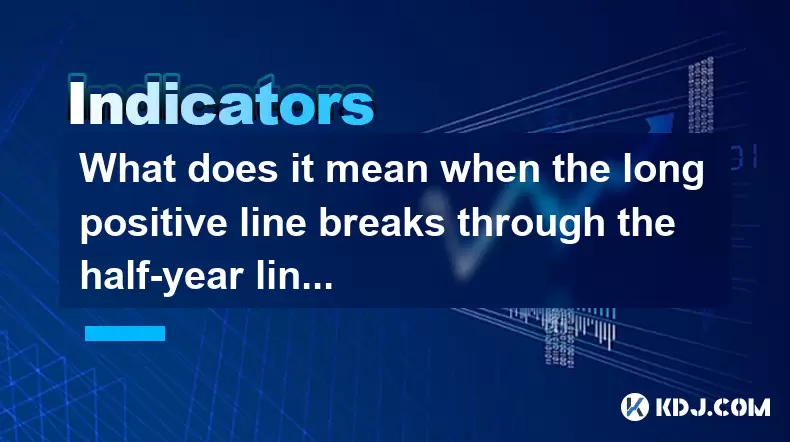
What does it mean when the long positive line breaks through the half-year line and then steps back?
Jul 25,2025 at 06:49pm
Understanding the Long Positive Line in Candlestick ChartsIn the world of cryptocurrency trading, candlestick patterns play a vital role in technical ...
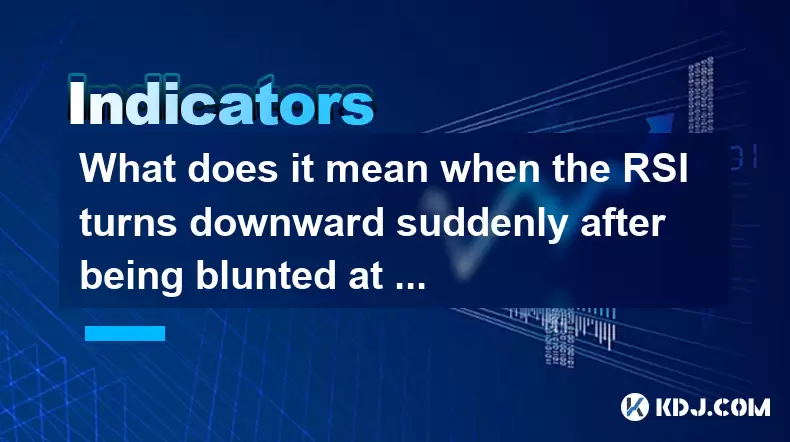
What does it mean when the RSI turns downward suddenly after being blunted at a high level?
Jul 25,2025 at 04:00pm
Understanding the RSI and Its Role in Technical AnalysisThe Relative Strength Index (RSI) is a momentum oscillator that measures the speed and change ...
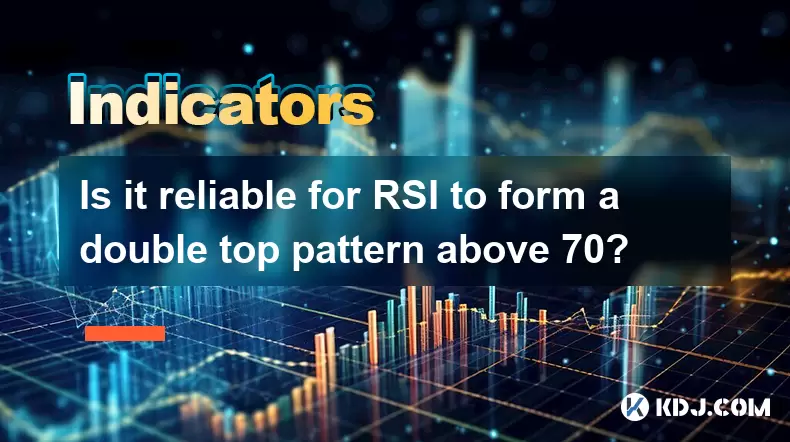
Is it reliable for RSI to form a double top pattern above 70?
Jul 25,2025 at 04:49pm
Understanding the RSI Indicator and Its Role in Technical AnalysisThe Relative Strength Index (RSI) is a momentum oscillator that measures the speed a...
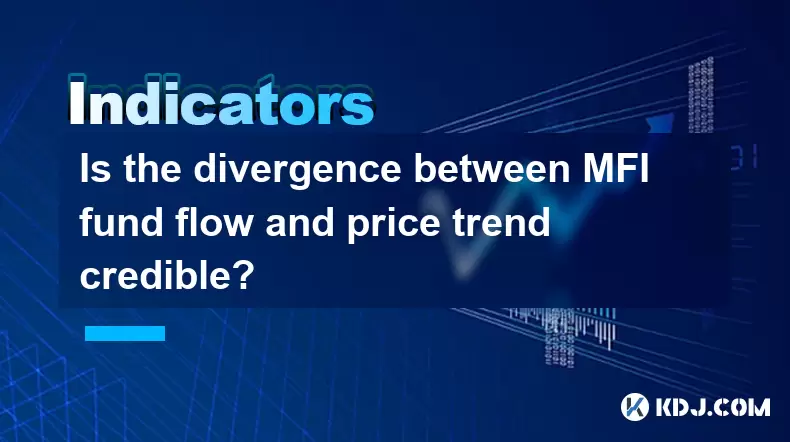
Is the divergence between MFI fund flow and price trend credible?
Jul 25,2025 at 12:01pm
Understanding MFI and Fund Flow in Cryptocurrency MarketsThe Money Flow Index (MFI) is a technical oscillator that combines price and volume to assess...

How to interpret that the KDJ D line is downward for a long time but the price is sideways?
Jul 25,2025 at 07:00pm
Understanding the KDJ Indicator and Its ComponentsThe KDJ indicator is a momentum oscillator widely used in cryptocurrency trading to assess overbough...

What does it mean that the KDJ indicator forms a double bottom at a low level?
Jul 25,2025 at 05:08pm
Understanding the KDJ Indicator in Cryptocurrency TradingThe KDJ indicator is a momentum oscillator widely used in cryptocurrency trading to identify ...

What does it mean when the long positive line breaks through the half-year line and then steps back?
Jul 25,2025 at 06:49pm
Understanding the Long Positive Line in Candlestick ChartsIn the world of cryptocurrency trading, candlestick patterns play a vital role in technical ...

What does it mean when the RSI turns downward suddenly after being blunted at a high level?
Jul 25,2025 at 04:00pm
Understanding the RSI and Its Role in Technical AnalysisThe Relative Strength Index (RSI) is a momentum oscillator that measures the speed and change ...

Is it reliable for RSI to form a double top pattern above 70?
Jul 25,2025 at 04:49pm
Understanding the RSI Indicator and Its Role in Technical AnalysisThe Relative Strength Index (RSI) is a momentum oscillator that measures the speed a...

Is the divergence between MFI fund flow and price trend credible?
Jul 25,2025 at 12:01pm
Understanding MFI and Fund Flow in Cryptocurrency MarketsThe Money Flow Index (MFI) is a technical oscillator that combines price and volume to assess...
See all articles

























































































